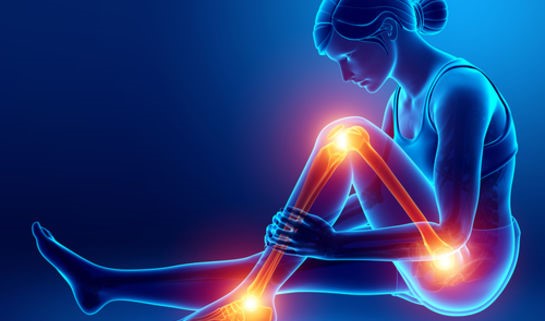
What is chronic pain and how does it affect the human body?
Everybody knows at least a little bit about pain. If you’ve ever had a headache, put your neck out, twinged your back, pulled a hamstring or stubbed your toe you’ve experienced pain on some level. Unfortunately, one in five Australians experiences chronic pain.
What is chronic pain? Well, chronic pain simply refers to any ongoing pain that has persisted beyond normal rehabilitation length, usually longer than 3 months. Those unfortunate enough to suffer from chronic pain often find that finding an effective treatment is almost impossible and many sufferers end up experiencing a form of disability and even depression.
Chronic pain is one of the most commonly misunderstood pathologies and physiotherapy training and ongoing studies for physiotherapists have spent a lot of time and resources to help pinpoint the leading causes. Many believe that musculoskeletal physiotherapists and sports specialist physiotherapists are the best placed to properly diagnose and treat many forms of chronic pain.[1]
What is the difference between acute and chronic / persistent pain?
Pain is the unpleasant or uncomfortable feeling caused by the brain in response to an actual or perceived injury to the body. Whether you stand on a nail, kick your toe or tear your ACL, the affected area feels the brunt of the pain, but it is the activation of local nerve cells and the sending of signals of distress/damage to the brain that actually causes pain. These signals are sent to the automatic, subconscious parts of the brain and are processed almost instantaneously. Pain sensations presumably evolved over the course of time as a warning device for our bodies to stop doing something and to restrict particular movements to allow healing to take place.
But pain is also complex and varied, being described as “a complex perceptual phenomenon that involves a number of dimensions, including, but not limiting to, intensity, quality, time course and personal meaning”.[2] For a patient, pain is normally the reason they see a physiotherapist, for the physio, pain is a kind of feeling that has its own anatomical and physiological system which begins with the receptors and ends up in the brain cortex. The trick is to find the source of the pain.
Acute pain comes on suddenly and in direct response to an injury or other clearly defined cause. Acute pain serves a useful biological purpose and activates the sympathetic nervous system in a way that makes diagnosis easier and more accurate.[3] Acute pain could be mild or severe, last a few seconds or up to weeks/months. Common causes of acute pain include:
- Burns or cuts
- Surgical procedures
- Broken bones, muscular and tendon injuries
- Dental damage and dental procedures
- Labor and childbirth
Chronic pain or Persistent pain on the other hand is ongoing, commonly lasting more than 3 months and is notoriously difficult to diagnose as the area causing the pain can be difficult to pinpoint. Some forms of chronic pain can be caused without direct injury to a particular area in the body and can be concocted by the brain. [4] Chronic musculoskeletal pain is one of the most difficult issues faced by healthcare professionals and can have long term physical and mental effects on those who suffer from it.
How do physiotherapists diagnose the cause of chronic / persistent pain?
Doctors have limited training when it comes to pain and usually only possess a basic understanding of the physical injuries and structural abnormalities that cause chronic pain. Think of a musculoskeletal or sports specialist physiotherapist as being a Doctor for pain, a specialist in getting to the root cause of complex and ongoing forms of pain.
Lane Cove Physiotherapy offers treatment based on scientific methods and years of practical experience in treating a range of chronic pain causes. The first step your physio will take you through is an in depth physical consultation and you will be asked a number of questions about your pain E.g. How long it has persisted, where it started, if it has changed or intensified and how the pain relates to the movement and feeling in other parts of your body. Once pain becomes chronic it can begin to affect the nerves and pain pathways differently which requires a number of different treatments.
A musculoskeletal physiotherapist is highly trained and able to identify clusters of seeming unrelated signs, symptoms, and other relevant information from their subjective and objective examinations which are then used to make a diagnosis and form a treatment plan. Your physio might ask you questions that vary from: When did you first feel a sensation of pain to can you brush your hair? Being able to create a broad picture of your everyday living along with injury pathology gives your physio the best chance to accurately diagnose the cause of your chronic pain.
Stay tuned for Part 2 of our chronic pain series where we will discuss the common causes of chronic pain and the various methods physiotherapists use to treat it.
[1] Pain Theory and Physiotherapy: Charman, Robert A, Physiotherapy, Volume 75, Issue 5, 246 – 254
[2] Merskey, H., Bogduk, N., 1994. Classification of chronic pain: descriptions of chronic pain syndromes and definitions of pain terms, second ed. IASP Press, Seattle
[3] Świeboda P, Filip R, Prystupa A, Drozd M. Assessment of pain: types, mechanism and treatment. Ann Agric Environ Med. 2013; Special Issue 1: 2–7.
[4] J Crofford, Leslie. (2015). Chronic Pain: Where the Body Meets the Brain. Transactions of the American Clinical and Climatological Association. 126. 167-83.



